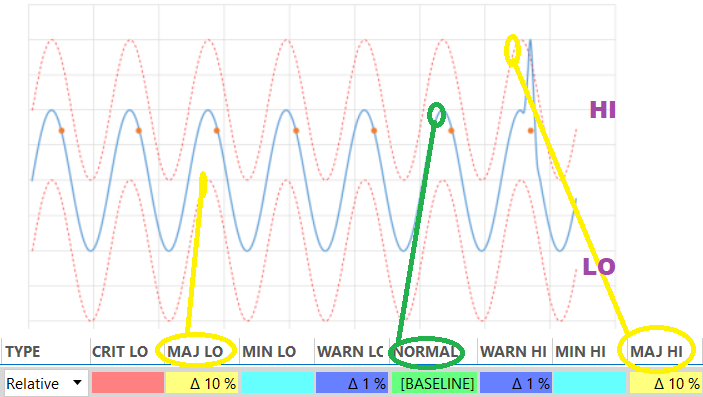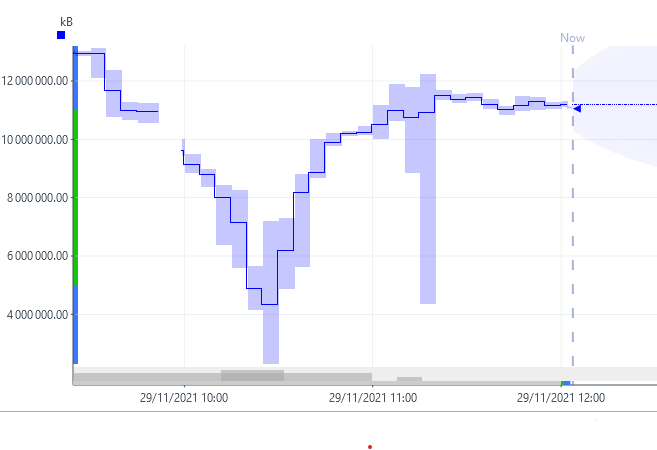Hi Dojo,
Quick follow-up from the previous post on baselines in Alarm Templates.
When using the abolute/relative type for a given parameter threshold, I can still specify e.g. a major low or a major high: isn’t one of these redundant if the threshold is defined as a Delta-range (+-)?
According to the help, a Delta gets defined eiher as a percentage or in absolute, so I was expecting CUBE to grey-out one of the ranges (e.g. Low) when the other (High) has been used for a given parameter.
At present I can still add the same delta value both for the HIGH (+) or LOW (-) range.
Is the below interpretation correct?

Are the Hi & Lo Delta values expected to be different, e.g. sort of different deviation (or severity) in the low range?
Or can I simply define my DELTA just for the “High” range and ignore the “Low”?

I’m interested in applying a Gaussian distribution model to monitor some of the parameters, any steer will be helpful.
Thanks
Both for absolute and relative thresholds, the high and low thresholds can be different. For instance, if I set the low and high warning thresholds as below, then a warning will be given if the parameter value is 1GB (= 1 000 000kB) higher than the current baseline value, or 5GB (= 5 000 000kB) lower than the current baseline value.
If the current baseline is 10GB (=10 000 000kB), then warnings will be given if the value is lower than 5GB, or higher than 11GB, as you can see on the picture below.
Relative thresholds, on the other hand, are calculated as relative differences with the current baseline value. For instance, if I set relative thresholds as below, then a warning will be given if the current parameter value is 50% lower, or 10% higher than the current baseline value.
With the same baseline as above, this would give warnings if the value is below 5GB (since 10GB – 50% of 10GB = 10GB – 5GB = 5GB), or higher than 12GB (since 10GB + 20% of 10GB = 10GB + 2GB = 12GB).
This also means that neither the absolute nor the relative alarm thresholds take into account the standard deviation, as in the Gaussian distribution model. However, if you happen to know the standard deviation (or are able to calculate or guess it), you could use absolute thresholds and use the standard deviation (σ) (respectively 2σ or 3σ) as lower and higher delta value for minor (resp. major and critical) alarms. This would then create minor (resp. major or critical) alarms if the value is higher than μ + σ (resp. μ + 2σ or μ + 3σ) or lower than μ – σ (resp. μ + 2σ or μ + 3σ). (Note that technically speaking, the smart baseline is calculated as the median and not the mean μ, however for a Gaussian distribution both coincide.)
Hi,
Thanks for the suggestion Alberto.
The client development team has created a task for this small improvement request.
Kind regards,
Thanks for this clarification, Tobe, appreciated
I’ll refer to “-Δ” for the “Low” threshold and to “+Δ” for the High threshold.
Any chance the +/- signs could also be added in the Alarm Template GUI?